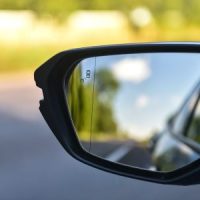Blind Spots: What They Are, Dangers of Blind Spots, and How To Avoid Blind-Spot Related Accidents

The term “blind spot” is one that you have probably heard get thrown around a lot. You probably heard this term while in driving school. This term is also used a lot in discussions about road safety. But do you really understand what the term “blind spot” means? Do you know why blind spots are a crucial concern for road users? Understanding what blind spots are, the dangers posed by blind posts, and how to mitigate the risks blind spots pose can significantly enhance road safety for you and other road users. In this article, we discuss what blind spots are, the dangers of blind spots, and the steps you can take to avoid blind-spot-related accidents.
What Are Blind Spots?
Blind spots are areas around a vehicle that are not directly visible to the driver because parts of the vehicle obscure them. These are areas around your car that you cannot see when you look through your rear or side view mirror or windscreen. Because blind spots are not visible through the vehicle’s mirrors, they become hidden from your line of sight. Generally, most vehicles have blind spots in the following areas;
- Directly behind the back bumper
- Directly in front of the front bumper
- On the driver’s side
- On the passenger’s side
- Behind the posts between the windshield and side windows
The size and location of blind spots may vary depending on various factors. For example, the vehicle’s size, shape, and height can impact the size and location of blind spots. A driver’s position, alertness, and the size of the mirrors can also impact the size and location of blind spots. Even two identical vehicles can have varying blind spots.
Blind spots can be found on all vehicles. However, blind spots are typically more pronounced on larger vehicles, such as trucks, because of various factors, such as their increased size and height, longer body, and the placement of mirrors.
Dangers of Blind Spots
Blind spots endanger drivers and other road users, such as pedestrians, motorcyclists, and cyclists, by limiting visibility. Blind spots make it hard for you as a driver to see other vehicles and road users. They also make your vehicle potentially invisible to other motorists. If a driver cannot see another vehicle or road user in their blind spots, they may make decisions that cause devastating consequences.
The following are some of the accidents that may occur due to blind spots;
- Lane-changing accidents: If a driver changes lanes without realizing that another vehicle is in their blind spot, it may result in a lane-changing accident.
- Vulnerable road user accidents: Drivers who do not notice pedestrians, cyclists, or motorcyclists in their blind spots can hit and injure these vulnerable road users.
- Merge accidents: If a driver does not check their blind spots before merging, it can result in a merging collision
How To Avoid Blind-Spot-Related Accidents
The following are some of the steps you can take to avoid blind-spot-related collisions;
- Adjust your mirrors
- Check over your shoulder
- Use blind-spot monitoring systems
- Maintain a safe following distance
- Signal your intentions
Legal Help Is Available
If you are injured by a driver who failed to take the necessary steps to avoid a blind spot collision, contact our London & Southeast Kentucky auto accident attorneys at Cessna & George Law Firm for legal help.
